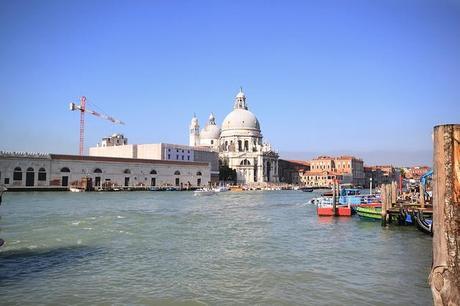
The Grand Canal or Canalazzo is the heart of Venice. Ever since the the founding days of the Venetian empire, this canal served as the major thoroughfare for the Venetian people. The most important historical palaces and famous Venetian buildings wrap around the edges of the Canal and was once upon a time the main drag of Venetian aristocrats. Most of the houses which now line the Canal as named after the original families who first built their houses to grow this great city
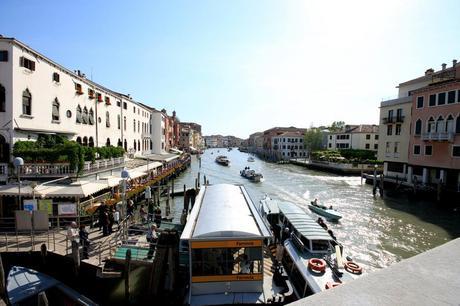
It was still early in the morning when we set out on our first Vaporette ride. Since Venice is a city built on the water there are no roads and the only way to get around is via water buses called the Vaporettes. It was still early enough in the morning that it wasn't too crowded on the first boat down to Saint Mark's Square. Sarah and I got a spot near the edge of the boat to get the full view of the wonderful scenery we passed by. It was incredible and more beautiful than I ever could have imagined. It was like being transported to another world of fantastical architecture and ancient designs. Come with me now on a tour down the Grand Canal.
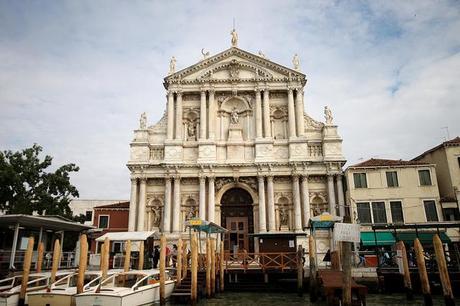 We passed by the beautiful Santa Maria di Nazareth, a wonderful example of baroque architecture built in 1602.
We passed by the beautiful Santa Maria di Nazareth, a wonderful example of baroque architecture built in 1602.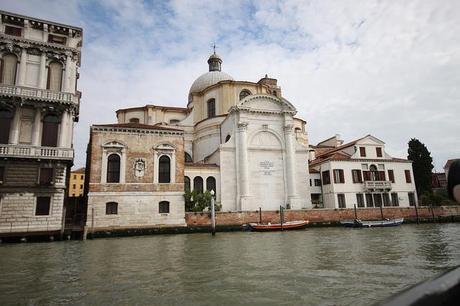 This is the back view of San Geremia, the church our hotel faces out on. This church was built in 1753 and houses the remains of Saint Lucy.
This is the back view of San Geremia, the church our hotel faces out on. This church was built in 1753 and houses the remains of Saint Lucy.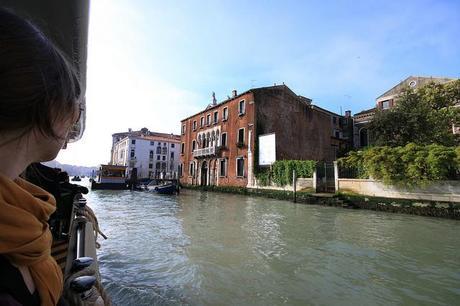 This house didn't have a name I could fine but I loved there over grown rose garden that spilled out over their gate and was seemingly reaching into the canal.
This house didn't have a name I could fine but I loved there over grown rose garden that spilled out over their gate and was seemingly reaching into the canal.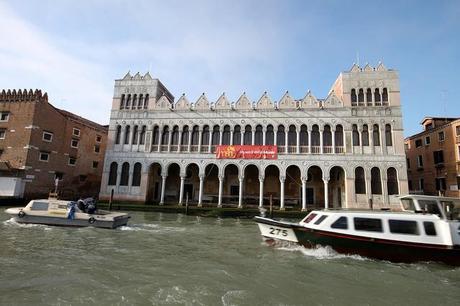 This is the Fondaco dei Turchi, once the seat of Venice's Ottoman Turkish population. Originally built in the first half of the 13th century it is a perfect example of the Byzantine period. In the 17th century the vast majority of the Ottoman Turkish population turned this building into a one-house-ghetto that housed hundreds of people and also housed warehouses and markets for Turkish traders.
This is the Fondaco dei Turchi, once the seat of Venice's Ottoman Turkish population. Originally built in the first half of the 13th century it is a perfect example of the Byzantine period. In the 17th century the vast majority of the Ottoman Turkish population turned this building into a one-house-ghetto that housed hundreds of people and also housed warehouses and markets for Turkish traders.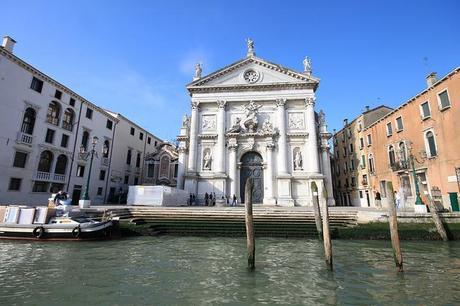 San Stae was once a beautiful 11th century church but was renovated in the 17th century by the Swiss master Domenico Rossi. Its powerful and striking baroque statues are unique due to their active forms which jump and leap out of their marble prison and give great life to this unassuming and otherwise small church.
San Stae was once a beautiful 11th century church but was renovated in the 17th century by the Swiss master Domenico Rossi. Its powerful and striking baroque statues are unique due to their active forms which jump and leap out of their marble prison and give great life to this unassuming and otherwise small church.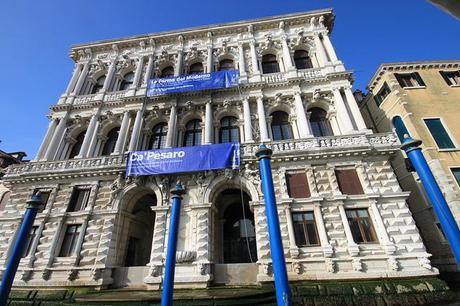 Above we can see the Ca' Pesaro. The Ca' Pesaro was once the residence of Leonardo Pesaro. This building is uniquely designed with repetitive and heavy use of pillars that adorned the entire building. The Pesaro family has turned its residence into a wonderful museum dedicated to Modern Art.
Above we can see the Ca' Pesaro. The Ca' Pesaro was once the residence of Leonardo Pesaro. This building is uniquely designed with repetitive and heavy use of pillars that adorned the entire building. The Pesaro family has turned its residence into a wonderful museum dedicated to Modern Art.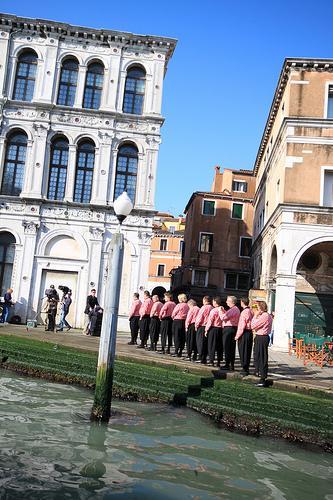
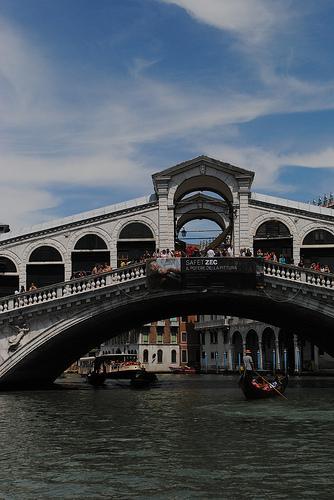 As we drove down the Canal we saw this processor on striped shirted men, who looked like a barbershop quartet. We watched them do a silly little photo shoot as we drove past the dramatic and ever present Rialto Bridge.
As we drove down the Canal we saw this processor on striped shirted men, who looked like a barbershop quartet. We watched them do a silly little photo shoot as we drove past the dramatic and ever present Rialto Bridge.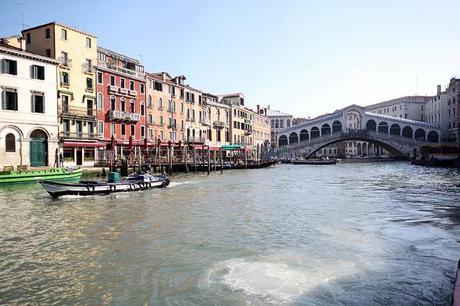 The Rialto bridge is the older bridge in Venice. It was built by Antonio da Ponte in 1591. Its repetitive and powerful porticos that line the top of the bridge was a point of contention amidst Venetian architects of the time but now the Rialto Bridge is one of the most iconic images from Venice and it is because of its unique and daring design.
The Rialto bridge is the older bridge in Venice. It was built by Antonio da Ponte in 1591. Its repetitive and powerful porticos that line the top of the bridge was a point of contention amidst Venetian architects of the time but now the Rialto Bridge is one of the most iconic images from Venice and it is because of its unique and daring design.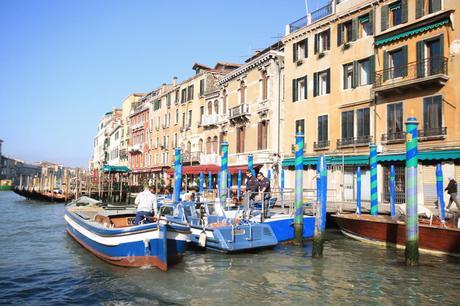
I was obsessed and in awe of the gorgeous colours on every boat dock. Each building has their own color scheme, making the entire Canal a river of wooden rainbow bulrushes.
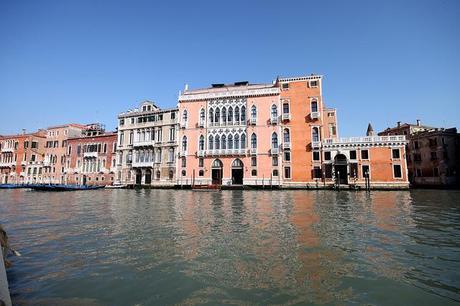 The contrast between the red brick and the white window frames one many of the houses on the grand canal is a unique and identifying feature of houses in Venice. An interesting aspect of the window frames and front facades in Venetian architecture is they can be used to identity which period the house is from. Byzantine houses feature thin horseshoe shaped arches with simple motif of the capitals. Gothic houses have intricate rib traceries on top of their arches (as can be seen in the main house above) along with trefoil designs. Renaissance houses are simpler with bold projecting roof cornices and wide arches. Finally the baroque houses have circular headstones, cherubs carved into the head of the windows and bold ornamentation.
The contrast between the red brick and the white window frames one many of the houses on the grand canal is a unique and identifying feature of houses in Venice. An interesting aspect of the window frames and front facades in Venetian architecture is they can be used to identity which period the house is from. Byzantine houses feature thin horseshoe shaped arches with simple motif of the capitals. Gothic houses have intricate rib traceries on top of their arches (as can be seen in the main house above) along with trefoil designs. Renaissance houses are simpler with bold projecting roof cornices and wide arches. Finally the baroque houses have circular headstones, cherubs carved into the head of the windows and bold ornamentation.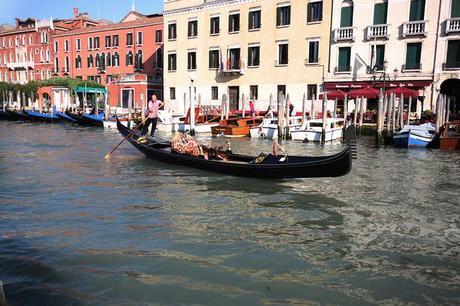 Our first Gondolier paddling into work.
Our first Gondolier paddling into work.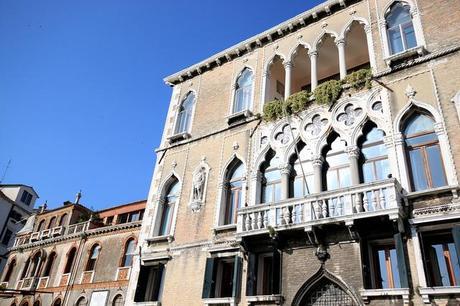 More examples of the gorgeous ogee arches and trefoil designs of the Gothic period.
More examples of the gorgeous ogee arches and trefoil designs of the Gothic period.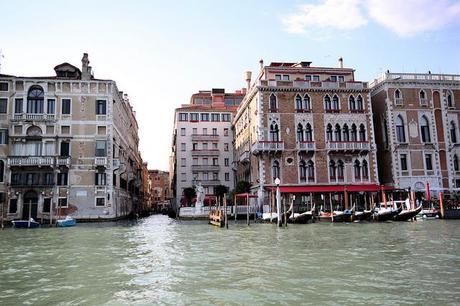
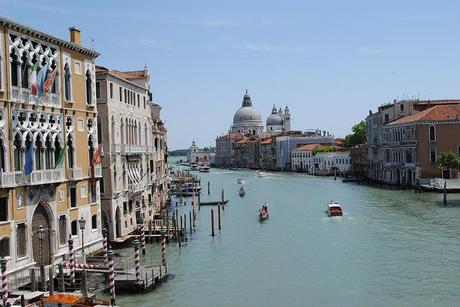 Turning the corner, peaking out towards the open sea.
Turning the corner, peaking out towards the open sea.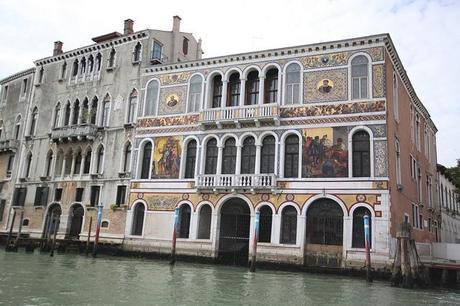 This, for me, is the most unique building on the Canal. It was originally built in the 16th century and features an intricate mosaic applied to the facade of the building featuring glass from Murano. Photos cannot do justice to the way the light hit the glass and patterns of colours it produced in the glassy water.
This, for me, is the most unique building on the Canal. It was originally built in the 16th century and features an intricate mosaic applied to the facade of the building featuring glass from Murano. Photos cannot do justice to the way the light hit the glass and patterns of colours it produced in the glassy water.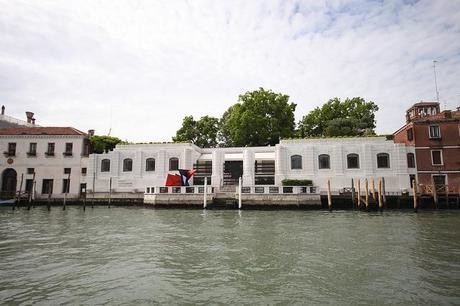 This is the amazingly modern Peggy Guggenheim house and museum. Her house was originally called the Palazzo Venier dei Leoni, an unfinished 18th century palazzo. Peggy transformed the old palace into a modern art paradise and when she finally moved out she turned the house into one of the most unique museums of its kind.
This is the amazingly modern Peggy Guggenheim house and museum. Her house was originally called the Palazzo Venier dei Leoni, an unfinished 18th century palazzo. Peggy transformed the old palace into a modern art paradise and when she finally moved out she turned the house into one of the most unique museums of its kind.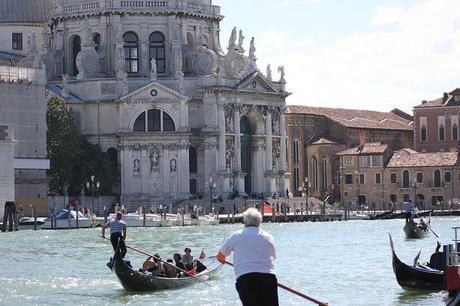 This is the opulent and overbearing Santa Maria della Salute. The church was built in memory of all those who died in the plague that ran rampant throughout Venice. It is a unique church in Venice due to its double domed octagonal design.
This is the opulent and overbearing Santa Maria della Salute. The church was built in memory of all those who died in the plague that ran rampant throughout Venice. It is a unique church in Venice due to its double domed octagonal design.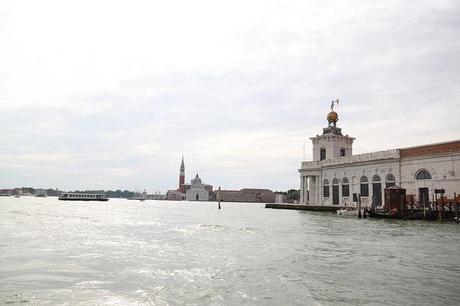 A view out from the Dogana di Mare, at the island church, Santa Maria Maggiore.
A view out from the Dogana di Mare, at the island church, Santa Maria Maggiore. 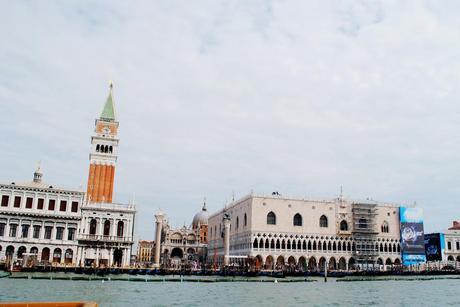 Our final destination Saint Mark's Square, the drawing room of all Europe. This is a beautiful view of the square from the Canal. I was on pins and needles as the boat pulled into the docks and we were let out to truly begin our exploration of Venice.
Our final destination Saint Mark's Square, the drawing room of all Europe. This is a beautiful view of the square from the Canal. I was on pins and needles as the boat pulled into the docks and we were let out to truly begin our exploration of Venice.
